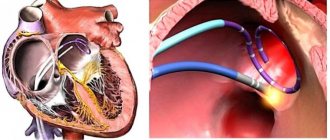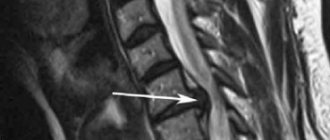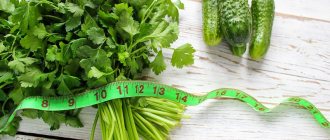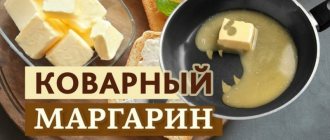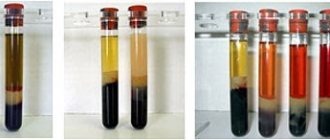Principles of proper nutrition
To slow down the absorption of carbohydrates and avoid sugar spikes, diabetics need to follow the following rules:
- Eat little but often (5-6 times a day), at regular intervals, at the same hours. Hunger strikes and strict diets are strictly contraindicated, as they violate the permissible glucose level.
- Be sure to have breakfast. It is breakfast that maintains the required blood sugar level.
- Do not eat late in the evening - dinner should be no later than 2 hours before bedtime.
- When compiling a menu, calculate bread units and BJU. The ideal ratio of proteins, fats and carbohydrates is 25:50:25.
- Make sure that the glycemic load index for one meal does not exceed 7 units, and for the whole day – 45 units.
- Eat coarse and grainy foods.
Food needs to be boiled, stewed, baked or steamed, which helps to maximize the preservation of beneficial properties. Fried, smoked and canned foods, as well as grilled and deep-fried foods, should be avoided.
Methods
The researchers used the CENTRAL, Medline, Embase, CINAHL, CAB databases (until August 2021).
Randomized clinical trials that included a low-carbohydrate diet (<130 g/day or <26% of 2000 kcal/day) or a very low-carbohydrate diet (<10% of total calories) for at least 12 weeks were included in the analysis. in adult patients with diabetes.
As a primary endpoint
looked at diabetes remission (HbA1c <6.5% or fasting glucose <7.0 mmol/L, without or with antidiabetic medications), weight loss, HbA1c, fasting glucose, and incidence of adverse events.
As secondary endpoints
We looked at quality of life and biochemical blood test parameters.
Prohibited and permitted products
The menu should include:
- vegetable and mushroom soups or cooked in low-fat meat broth;
- cereal porridges (buckwheat, barley, pearl barley, oatmeal);
- boiled fish;
- lean meat;
- seafood;
- mushrooms;
- vegetables (cabbage, zucchini, pumpkin, eggplant, cucumbers);
- boiled (preferably in the skin) and baked potatoes;
- legumes;
- greens (lettuce, spinach);
- soft-boiled eggs and omelet;
- fermented milk products (sour cream, cottage cheese, cheese);
- sour fruits (lemons, grapefruits, plums, apples);
- bran and grain bread;
- bakery products made from wholemeal flour;
- some juices, coffee, black, green and herbal tea (rosehip, dandelion, nettle).
You can eat no more than 200 grams of potatoes, and no more than 8-9 tablespoons of porridge and pasta.
The following should be excluded from the diet:
- pork fat;
- fatty fish and meats;
- sausages and smoked meats;
- pates;
- fast foods, semi-finished products;
- ketchup, mayonnaise;
- French fries and potato croquettes;
- salty and spicy foods;
- semolina and rice porridge;
- grapes and raisins;
- flour products (dumplings, dumplings, pies, pancakes);
- baked goods and sweets;
- honey and jam;
- condensed milk;
- chocolate, sweets;
- sweet fruits and berries (bananas, pears, apricots, etc.);
- nuts and dried fruits;
- sweet and alcoholic drinks;
- White bread.
A strict diet must be followed for type 2 diabetes. It is important to consider the calorie content of foods. It should not exceed 1700 kilocalories per day.
With type 1 diabetes, you can eat almost anything, but take into account the permissible number of bread units.
Diet recipes
Cottage cheese casserole without semolina and flour
To prepare, you will need 250 g of cottage cheese (the cottage cheese should not be low-fat), 70 ml of milk, a couple of eggs, lemon peel, vanilla.
Method of preparation: grate the lemon peel on a fine grater, add egg yolks, cottage cheese, milk, vanilla and mix by hand with a fork or using a blender. The whites need to be cooled, beat them in a bowl until foamy, and add a little salt. Pour the egg whites into the curd mass, then pour the mixture into a mold that has been greased in advance. Bake for 30 minutes at 160 degrees.
Chicken soup with pumpkin and mint
To prepare, you will need half a kilo of pumpkin, 150 g of chicken fillet, which is the daily norm for a diabetic, 1 small onion, 50 g of cheese.
Method of preparation: peel the pumpkin and cut into small cubes. Boil the chicken fillet for 25 minutes, drain the broth at least 2 times. Cut the onion into rings. Sauté the onion and pumpkin in a frying pan. Grind the boiled fillet and mix with the stewed pumpkin, then grind it all using a blender. After the consistency has become homogeneous, pour it into the broth (since the broth is not very fatty, it can be consumed even if you have diabetes). Stir until you get a puree. Before serving dinner, add chopped cheese and mint leaves to the plate.
Adding sugar to dessert is undesirable, but is allowed in small quantities. One of the best desserts will be baked apples with cottage cheese; this is a completely dietary product.
It is important that a diabetic does not experience any dietary restrictions. Try to cook different dishes every week, or better yet, keep a food diary, and the feeling that you are fighting an illness will never visit you.
Your health depends entirely on your lifestyle and needs support. Watch your diet, eat healthy and tasty. Your doctor or nutritionist will help with this. Be healthy!
Diabetes and diet: everything is mixed with sugar
One of the main myths circulating on the Internet: a diabetic cannot eat food with carbohydrates! In fact, if you refuse such food, you can very quickly go “to the next world.” As well as eating too much of it. To understand what the catch is, you need to understand the concept of “diabetes”.
In a nutshell, the disease can be characterized as follows: diabetics have a metabolic disorder due to problems with the production of the hormone insulin, which is responsible for the absorption of sugar. Sugar (glucose) serves as food for all cells of the body - it provides energy. There is no insulin - sugar does not enter the cells, but accumulates, poisoning the body. In other words, there is no life without sugar, and the problem with diabetes is that it ends up in the wrong places.
You may ask, what does diet have to do with it if the disease is not “from food”? It's simple! There are 2 types of diabetes:
- In type I diabetes, insulin is not produced at all - this is insulin-dependent diabetes. To improve the condition, diabetics with this form of the disease are prescribed insulin in tablets or injections. Such patients need a diet so as not to exceed the dose of sugar that can be absorbed by the administered insulin.
- In type II diabetes, insulin is produced, but the cells do not perceive it well - this is non-insulin-dependent diabetes. In this case, insulin is not prescribed, and health must be maintained with a diet that limits carbohydrates to the extent that the body can cope with them.
In diabetes, the body cannot absorb large amounts of sugar, but at the same time it cannot do without glucose. This means that a diabetic’s diet should be planned in such a way that glucose is supplied in small portions, but often. Plus, it is very important that it is in an accessible form.
Low-carb diet for type 2 diabetics - menu with recipes
The menu is presented for the week. A low carbohydrate diet helps restore metabolic processes. In addition, this is an opportunity to lose weight and reduce the risk of developing cardiovascular diseases.
Day 1
For breakfast you can make parmesan scrambled eggs. Ingredients:
- 2-3 eggs;
- cauliflower;
- tomato;
- cheese;
- salt and spices.
Vegetables should be washed and cut into small pieces, and then fried in oil. Add eggs with spices to them and mix thoroughly. Sprinkle with grated cheese.
A glass of kefir or natural yogurt is suitable as a snack
Dinner:
- squid salad;
- keto cabbage soup;
- a slice of whole grain bread.
For an afternoon snack , eat a couple of small pears or apples.
And for dinner you can bake fish in lemon juice, serving it with a salad of fresh cabbage and other vegetables.
Day 2
Breakfast will consist of buckwheat porridge and vegetable salad, as well as tea or coffee.
For a snack, drink a glass of milk,
and for lunch you can try keto fish solyanka. To prepare it you will need:
- 1 l. water;
- 500 g fish;
- 200 g onion;
- 150 g olives;
- 100 g pickled cucumbers;
- salt and spices.
Chopped onions are sautéed in a small amount of oil with tomato paste. Pieces of pickled cucumbers and olives are added to the prepared fish broth.
Afternoon snack - 100-150 g of fruit jelly without sugar.
For dinner, prepare 250 g of cottage cheese casserole and drink a glass of kefir.
Day 3
Example of a diet for day 3 of the diet:
- breakfast - porridge with oat bran or muesli without raisins and sugar
- snack - raspberries or any other unsweetened fruit;
- lunch - salad with egg and 100-150 g of boiled beef;
- afternoon snack - a glass of natural yoghurt with nuts;
- dinner - vegetable salad and steamed meat cutlet.
Day 4
For breakfast , prepare bulgur porridge, adding fresh berries or fruits to it.
And between meals you can eat a couple of apricots or peaches.
Lunch options:
- omelette of eggs, tomatoes, cauliflower and bell pepper;
- 100 g gluten-free legume pasta with vegetable addition;
- 250-300 g of lazy cabbage rolls without rice.
Afternoon snack - apple.
For dinner, boiled cauliflower with stewed turkey or rabbit is suitable.
Day 5
Variations of dishes for day 5:
- breakfast - omelet with tomatoes and grated cheese;
- snack - tea without sugar and a sandwich of peeled rye or keto bread with a piece of cheese and herbs;
- lunch - stewed beans with chicken breast;
- afternoon snack - Greek yogurt;
- dinner - vegetable salad and boiled fish.
If you have an irresistible urge to eat something sweet, instead of the suggested snack, try a keto version of no-bake cheesecake. The base is made from nut flour and butter, and mascarpone cream cheese and gelatin are used for the filling.
Day 6
Diet for day 6:
- breakfast - poached eggs and coffee with coconut milk without sugar;
- snack - keto almond flour pancakes;
- lunch - vegetable salad of cucumbers with tomatoes and 2 steam chicken cutlets;
- afternoon snack - a glass of kefir or 100 g of cottage cheese with nuts;
- dinner - chicken baked in garlic sauce.
Day 7
For breakfast , prepare crumbly buckwheat seasoned with milk and butter.
Snack - tea and bread with a piece of cheese and ham.
For lunch you can treat yourself to a hearty and tasty salad:
- 300 g of boiled meat or poultry;
- 150 g tomatoes;
- 75 g parmesan;
- lettuce leaves.
The ingredients must be cut into small pieces and mixed thoroughly. To season the dish, use a marinade made from a mixture of olive oil, lemon juice and your favorite spices.
Afternoon snack - an apple or a couple of peaches.
And for dinner you can eat 200-250 g of cottage cheese, adding berries or sun-dried tomatoes with spices to it.
Recommendations for salt intake
For type 2 diabetes mellitus, it is advisable to reduce the amount of salt consumed. Try to add flavor to your dishes with other additives:
- seasonings;
- lemon juice;
- fresh greens.
This is especially true for those who suffer from excess weight and swelling. But still, it is better not to exclude sodium completely from the diet.
Sweeteners
The following are acceptable artificial sweeteners:
- acesulfame potassium;
- aspartame;
- sodium cyclamate;
- erythritol;
- allulose;
- sucralose.
You can use stevia as a natural sweetener. But it is advisable not to use sorbitol and xylitol. Fructose is a completely different story; read more about sweeteners and the dangers of fructose here.
Alcohol
Many alcoholic drinks have a high glycemic index. Strong alcohol, in turn, loads the already poorly functioning pancreas. For this reason, alcohol must be replaced:
- mineral water;
- homemade fruit drink without sugar;
- compotes without sugar;
- herbal decoctions;
- black and green tea.
Coffee is allowed in small quantities and only without sugar. You should not brew the drink too strong, and also do not add a lot of milk to it.
How to outwit "cunning products"
Some foods have different GI index before and after processing, so the diabetic must take into account the correct indicators. Compare: brown and refined rice - 50/75 GI, boiled potatoes and mashed potatoes "from bags" - 65/90. All fast food is pure harmful carbohydrates, so you need to give it up once and for all. The more natural the product, the more beneficial it is for diabetes.
The GI index can be easily lowered if you know some rules:
- vegetables contain fiber, which lowers GI, so add them to any dish - meat, fish, pasta, etc.
- carbohydrate foods, well soaked in saliva, are less digestible, so chew the delicious candy long and slowly;
- Protein foods “extinguish” the GI index, so potatoes with milk are correct if you do not add oil to it: fats, on the contrary, increase this indicator.
In the initial stages of diabetes, a properly designed and strictly followed diet helps normalize metabolism without insulin. Eat right and be healthy!

